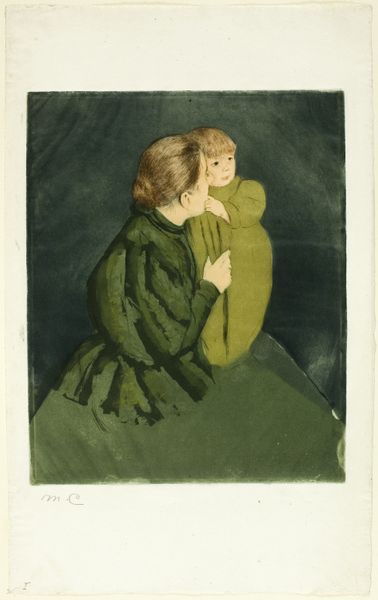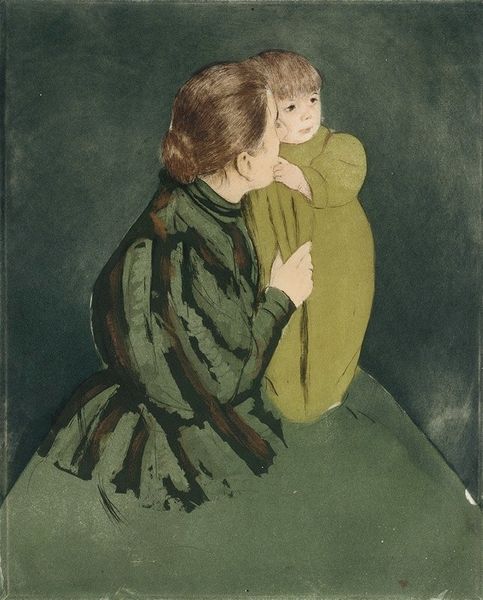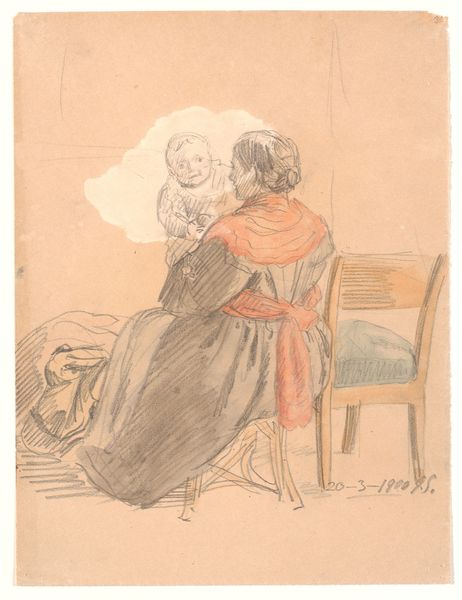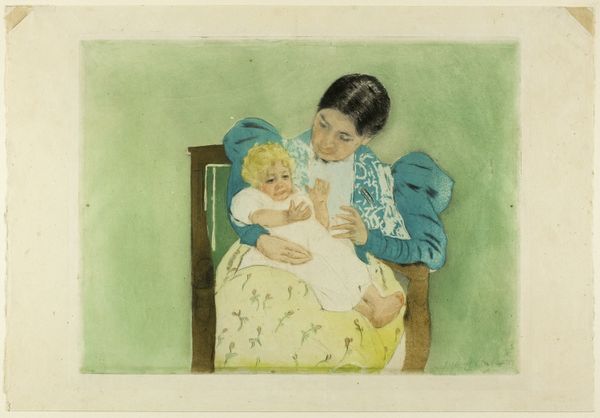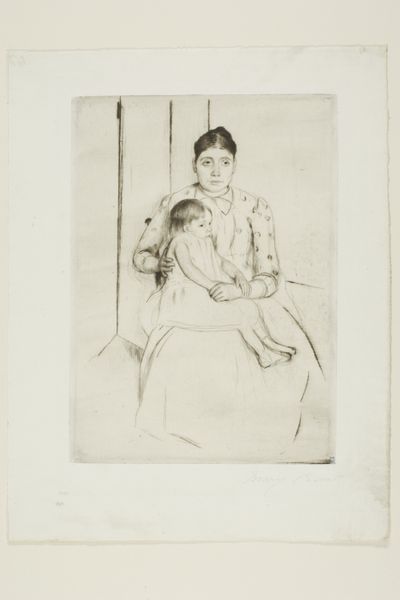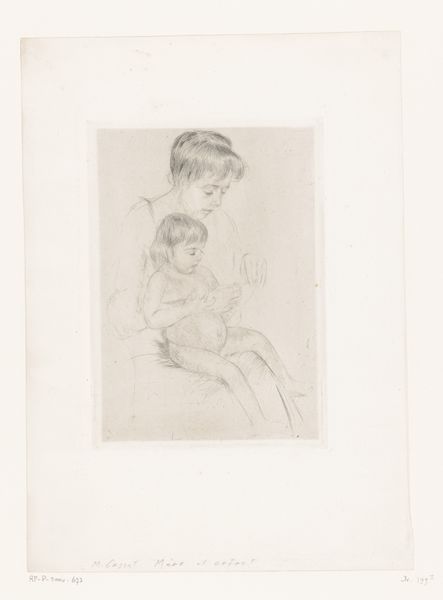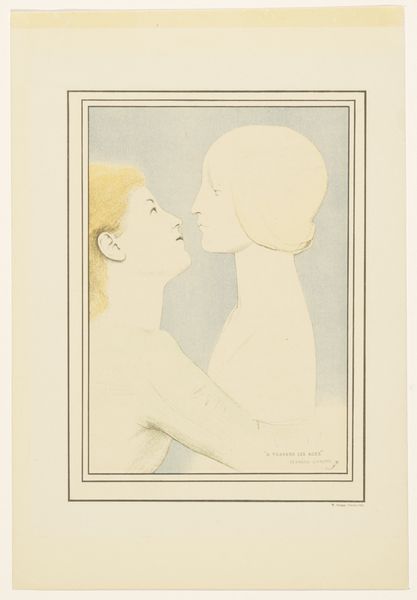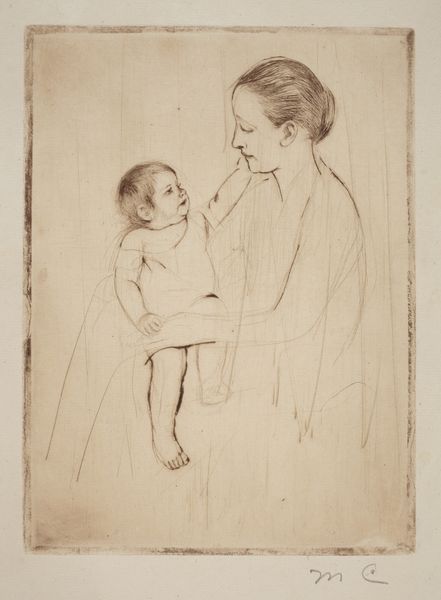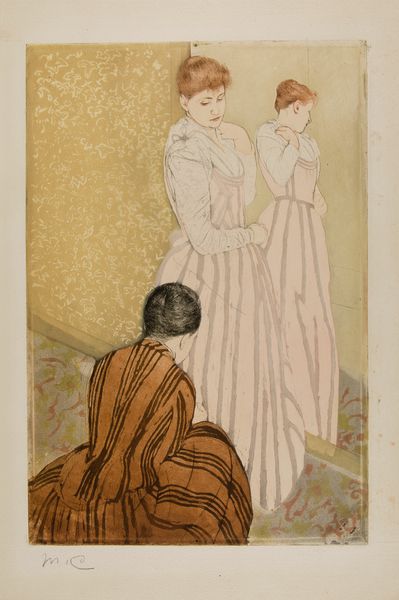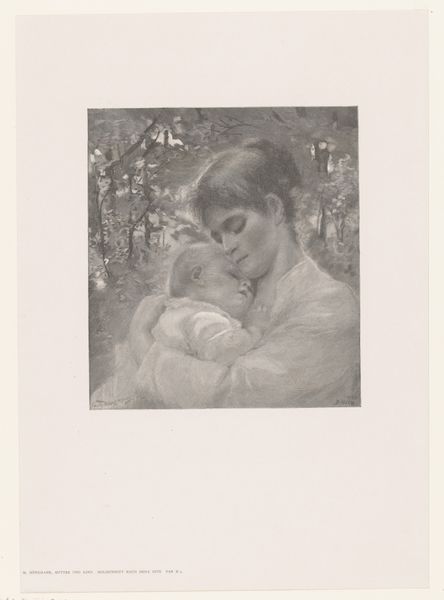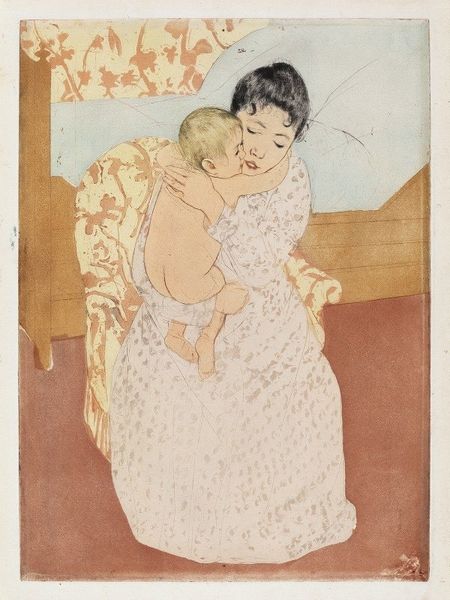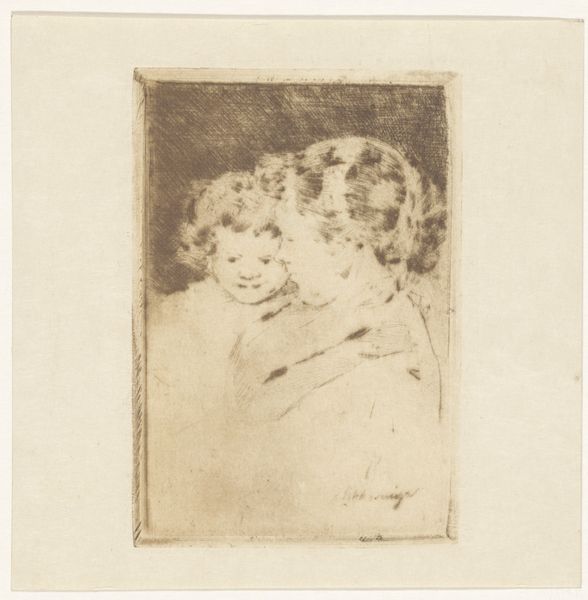
Dimensions: plate: 29.8 x 24.1 cm (11 3/4 x 9 1/2 in.) sheet: 47.2 x 29.4 cm (18 9/16 x 11 9/16 in.)
Copyright: National Gallery of Art: CC0 1.0
Curator: Mary Cassatt’s “Peasant Mother and Child,” created around 1894, employs etching techniques to portray this intimate scene. Editor: It strikes me as almost melancholy, a very soft rendering of what could be seen as an idyllic mother-child relationship, softened and maybe a bit world weary. Curator: Yes, etching allowed Cassatt to explore nuances of line and tone, which definitely impacts the overall feeling, and note that she did not use professional models but regular folk for that very feeling. The impressions vary subtly due to the inherent variables in the printing process itself; no two impressions are quite identical. Think of the working class at the end of the 19th century. Editor: I suppose that also speaks to the accessibility she might have been aiming for. It feels democratic in some ways. Also, the printmaking itself is important. Who has the ability to own an original painting? Who does, or can have, a print in their home? It opens new viewing opportunities. Curator: Absolutely. Moreover, we see a blurring between traditional high art subjects and the quotidian. Consider the laborious act of pulling each individual print. This merges high art processes with those considered more akin to craft and working-class labor. Also this fits well into the “New Woman” role which she and many other contemporary artists saw themselves embodying and celebrating, representing the world they were really living in. Editor: I notice too the background’s minimalist texture that seems at odds with the textured figures. The flat, greenish color, rather than detailing an identifiable place, creates a kind of contained, perhaps stifled, intimate zone around the figures, like the weight of social expectation pressing on these working-class folks. Curator: A fitting reflection. For me, focusing on the means of production, seeing how these factors informed not just its creation, but its social positioning makes us understand this artwork more comprehensively. Editor: And for me, it's always rewarding to consider art's accessibility—how socio-political movements democratize or challenge entrenched structures of privilege through new imagery.
Comments
No comments
Be the first to comment and join the conversation on the ultimate creative platform.
